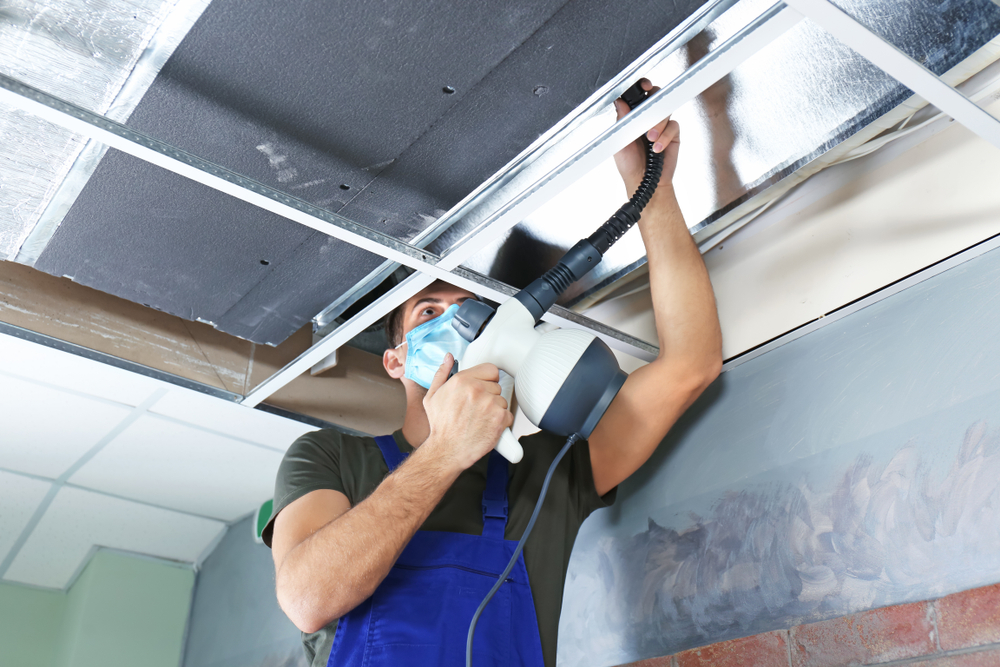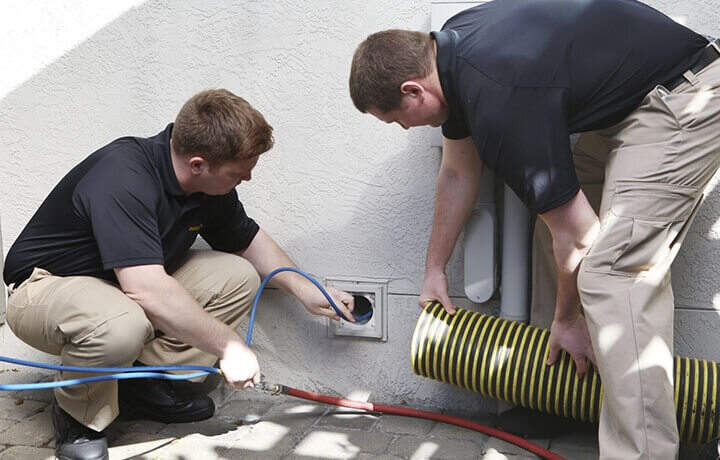Maintaining a clean and safe environment is crucial in any laboratory setting. One of the often overlooked yet vital aspects of laboratory maintenance is duct sanitizing. Properly sanitized ducts not only improve air quality but also enhance the overall efficiency of laboratory operations. Understanding the importance of duct sanitizing for laboratories can significantly impact both the safety and productivity of these essential environments.

Why Duct Sanitizing Matters in Laboratories
Laboratories are spaces where precision and safety are paramount. Air quality plays a critical role in ensuring both. Contaminants and pollutants in air ducts can lead to compromised results, equipment malfunctions, and potential health risks for laboratory personnel. Therefore, regular duct sanitizing is a necessary practice to maintain the integrity of laboratory work.
Understanding the Process of Duct Sanitizing
The process of duct sanitizing involves several steps, each designed to remove contaminants and prevent their recurrence. Initially, ducts are inspected to identify potential problem areas. This is followed by a thorough cleaning using specialized equipment to remove dust, debris, and any microbial growth. Finally, a sanitizing solution is applied to ensure any remaining microorganisms are eliminated.
Importance of Regular Inspections
Regular inspections of air ducts are the first step in maintaining a clean laboratory environment. These inspections help identify any buildup of contaminants that could compromise air quality. By catching these issues early, laboratories can prevent more significant problems down the line.
Cleaning Techniques for Laboratories
Cleaning air ducts in laboratories requires specialized techniques to ensure all contaminants are effectively removed. This often involves the use of HEPA filters and advanced cleaning equipment capable of reaching every corner of the duct system. Such thorough cleaning ensures that no residue is left behind, which could otherwise impact laboratory operations.
Benefits of Duct Sanitizing in Labs
There are numerous benefits to regularly sanitizing laboratory ducts. These include improved air quality, reduced risk of contamination, and enhanced efficiency of HVAC systems. By maintaining clean air ducts, laboratories can ensure that their work environments are safe and productive.
Improved Air Quality
One of the primary benefits of duct sanitizing is improved air quality. Clean air ducts help remove pollutants and allergens from the air, creating a healthier environment for laboratory personnel. This is particularly important in settings where sensitive experiments are conducted.
Reduced Risk of Contamination
Contaminants in air ducts can lead to compromised laboratory results. By ensuring ducts are regularly sanitized, laboratories can significantly reduce the risk of contamination, thereby protecting the integrity of their work.
Enhanced HVAC Efficiency
Clean air ducts allow HVAC systems to operate more efficiently. This not only reduces energy costs but also extends the lifespan of the HVAC equipment. In laboratories, where precise temperature and humidity control are important, efficient HVAC systems are essential.
Choosing the Right Duct Sanitizing Service
Selecting a duct sanitizing service is a critical decision for laboratory managers. It is important to choose a service provider with experience in laboratory settings, as they will understand the unique requirements and challenges these environments present.
Key Considerations
When selecting a duct sanitizing service, consider factors such as the company’s experience, the methods they use, and their reputation. Additionally, ensure they comply with relevant industry standards and regulations to guarantee the best results.
The Role of Technology in Duct Sanitizing
Advancements in technology have significantly improved the duct sanitizing process. Modern equipment and techniques allow for more thorough cleaning and sanitizing, ensuring that laboratory environments remain safe and efficient.
Innovative Equipment
Innovative equipment, such as robotic cleaners and advanced filtration systems, have made it possible to clean ducts more effectively than ever before. These tools can reach areas that were previously difficult to access, ensuring comprehensive cleaning.
Enhanced Sanitizing Solutions
Enhanced sanitizing solutions have also contributed to the effectiveness of the duct sanitizing process. These solutions are specially formulated to eliminate a wide range of microorganisms, providing an additional layer of protection for laboratory environments.
Regular Maintenance and Its Long-Term Benefits
In addition to regular sanitizing, maintaining laboratory ducts involves ongoing care and attention. This includes routine inspections and cleaning schedules to ensure ducts remain in optimal condition.
Long-Term Savings
By investing in regular duct sanitizing and maintenance, laboratories can achieve significant long-term savings. Clean ducts reduce the need for frequent repairs and replacements, ultimately saving money on costly HVAC system overhauls.
Increased Productivity
Clean and well-maintained ducts contribute to a more productive laboratory environment. With improved air quality and efficient HVAC systems, laboratory personnel can focus on their work without the distractions of poor air quality or equipment malfunctions.
Conclusion: The Importance of Duct Sanitizing
In conclusion, duct sanitizing for laboratories is an essential practice for maintaining safety and efficiency. By ensuring that air ducts are regularly sanitized, laboratories can protect the health of their personnel, the integrity of their work, and the efficiency of their operations. For more insights on duct cleaning, you can visit this article.

FAQ
1. How often should laboratory ducts be sanitized?
It is recommended to sanitize laboratory ducts at least once a year. However, the frequency may vary based on the specific needs and conditions of the laboratory.
2. What are the signs that laboratory ducts need sanitizing?
Signs that ducts may need sanitizing include unusual odors, visible mold, or an increase in allergy symptoms among personnel. Regular inspections can help identify these issues early.
3. Can duct sanitizing improve laboratory results?
Yes, by reducing contaminants and improving air quality, duct sanitizing can contribute to more accurate and reliable laboratory results.
This article contains affiliate links. We may earn a commission at no extra cost to you.